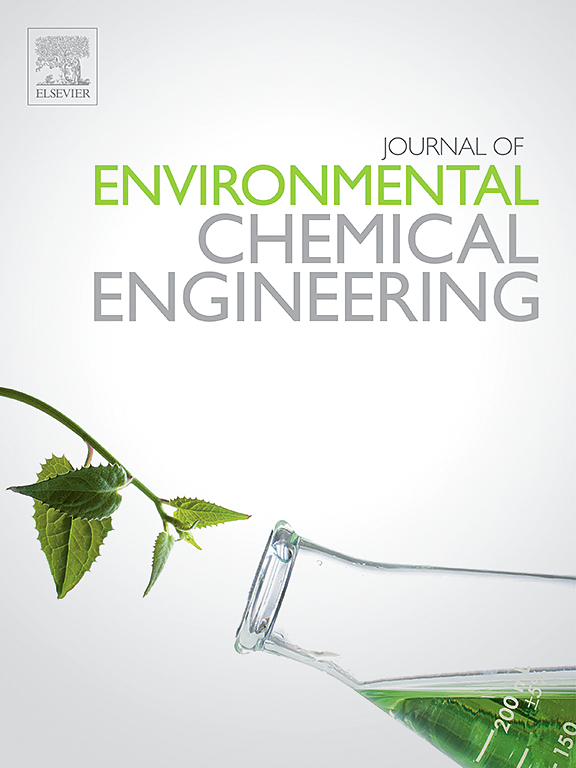基于分子印迹和 MXene 的电化学传感器用于检测药物和有毒化合物:简明综述
IF 7.4
2区 工程技术
Q1 ENGINEERING, CHEMICAL
引用次数: 0
摘要
自 2011 年发现二氧化二烯以来,人们对二氧化二烯的各种应用进行了大量研究,其中包括电化学传感等领域。开发具有高选择性和高灵敏度的电化学传感器至关重要。人们已经考虑用几种纳米结构材料来制造电化学(生物)传感器,以获得更高的选择性和灵敏度。最近,由于二维纳米材料具有独特的化学和物理特性,二氧化二烯作为电活性改性剂在开发电化学传感器方面引起了广泛关注。二氧化二烯具有高导电性、疏水性和大比表面积等特性,吸引了各领域研究人员的兴趣。这包括海水淡化和废水处理等环境水工程应用,以及用于检测有害环境污染物的高效传感器的设计和制造。本研究简要概述了如何利用基于 MXenes 的电化学传感器来检测环境有毒污染物,包括药物、重金属、杀虫剂等。论文深入探讨了 MXenes 的合成方法和特性。此外,论文还探讨了分子印迹聚合物 (MIP)、金属纳米颗粒和其他碳纳米结构材料的整合,以提高基于 MXene 的传感器的灵敏度和选择性。此外,报告还探讨了主要挑战,并对未来的研究方向进行了展望。本文章由计算机程序翻译,如有差异,请以英文原文为准。
Molecularly imprinted and MXene-based electrochemical sensors for detecting pharmaceuticals and toxic compounds: A concise review
Since the discovery of MXenes in 2011, considerable research has been conducted on the diverse applications of MXenes, encompassing areas such as electrochemical sensing. It is crucial to develop electrochemical sensors with high selectivity and sensitivity. Several nanostructured materials have been contemplated for the fabrication of electrochemical(bio)sensors, aiming to attain superior selectivity and sensitivity. Lately, MXenes have attracted considerable interest as electro-active modifiers in developing electrochemical sensors, owing to their distinctive chemical and physical characteristics as 2D nanomaterials. MXenes possess attributes such as high conductivity, hydrophobicity, and expansive specific surface areas, capturing the interest of researchers across various fields. This includes environmental water engineering applications such as desalination and wastewater treatment and the design and construction of efficient sensors for detecting hazardous environmental pollutants. This study provides a concise overview of the utilization of electrochemical sensors based on MXenes for detecting environmental toxic pollutants, including pharmaceuticals, heavy metals, pesticides, and more. The paper delves into the synthetic methods and characteristics of MXenes. Furthermore, it explores the integration of molecular imprinted polymers (MIPs), metal nanoparticles, and other carbon nanostructured materials to enhance the sensitivity and selectivity of MXene-based sensors. Moreover, it addresses the main challenges and provides perspectives on future research directions.
求助全文
通过发布文献求助,成功后即可免费获取论文全文。
去求助
来源期刊

Journal of Environmental Chemical Engineering
Environmental Science-Pollution
CiteScore
11.40
自引率
6.50%
发文量
2017
审稿时长
27 days
期刊介绍:
The Journal of Environmental Chemical Engineering (JECE) serves as a platform for the dissemination of original and innovative research focusing on the advancement of environmentally-friendly, sustainable technologies. JECE emphasizes the transition towards a carbon-neutral circular economy and a self-sufficient bio-based economy. Topics covered include soil, water, wastewater, and air decontamination; pollution monitoring, prevention, and control; advanced analytics, sensors, impact and risk assessment methodologies in environmental chemical engineering; resource recovery (water, nutrients, materials, energy); industrial ecology; valorization of waste streams; waste management (including e-waste); climate-water-energy-food nexus; novel materials for environmental, chemical, and energy applications; sustainability and environmental safety; water digitalization, water data science, and machine learning; process integration and intensification; recent developments in green chemistry for synthesis, catalysis, and energy; and original research on contaminants of emerging concern, persistent chemicals, and priority substances, including microplastics, nanoplastics, nanomaterials, micropollutants, antimicrobial resistance genes, and emerging pathogens (viruses, bacteria, parasites) of environmental significance.
 求助内容:
求助内容: 应助结果提醒方式:
应助结果提醒方式:


